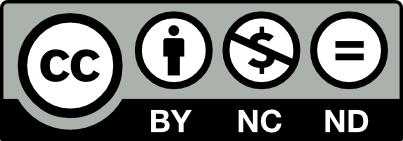This page is licensed under Creative Commons under Attribution 4.0 International. Anyone can share content from this page, with attribution and link to College MatchPoint requested.
College Spotlight: MIT
Massachusetts Institute of Technology (MIT) is located in Cambridge, MA, across the Charles River from downtown Boston. An urban setting, the 168-acre campus hosts a variety of architectural styles, from neoclassical to modernist. Ranked 7th among national universities by US News, MIT's acceptance rate is less than 8%. At our recent tour, an admissions officer said, "It's amazing how many absolutely amazing students we say 'no' to. Here's what I know--the world is going to be a great place because young people today are doing such great things. I also want to remind you that there are many fantastic colleges out there. You are going to do very well whether you come here or not."
Students who do manage to earn a coveted spot at this illustrious school seem happy, and the school boasts a 98% freshman retention rate. And while only freshman are required to live on campus, approximately 70% of students remain on campus for all four years. Each of the 11 campus dorms has a unique personality, from a "maker" dorm (which builds a fully-functional roller-coaster each year) to the party dorm. Some floors within dorms have even established a culture, and students often will live in the same place for their college tenure. 20% of students participate in Greek life, but with more than 500 eclectic clubs to choose from--beekeeping, underwater hockey, and a chocolate lab, to name a few--the social scene is active. The campus seems to live up to its reputation for both working and playing hard. And to ensure that its students make time to unwind, the school shuts down all classes and academic meetings from 5-7 each day.
The social scene pales in comparison to the academics at MIT. Operating on a 4/1/4 schedule, the school makes a concerted effort to help freshman students find their footing. All first semester courses are Pass/No Credit and second semester classes can earn an A, B, C, or No Credit. And since students are accepted without needing to declare a major, they are allowed ample time to explore a variety of subjects before settling on a field of study. Of the 5 schools that make up the university, Engineering is the largest, followed by Science, which includes math. One of the most notable features of an MIT education is its unparalleled access to undergraduate research.
Through its unique Undergraduate Research Opportunity Programs (UROP), students can apply for research positions (taking pay or school credit for the work) alongside MIT professors. Many students complete more than one UROP, and they are not limited to projects within their major (a computer science major with a chemical engineering interest may pursue a drug delivery project, for example). Students are encouraged by the (very involved) faculty to take ownership of their learning, and students may cross-register at Harvard for any class that MIT doesn't offer. With a student-to-faculty ratio of 8:1, students and professors work closely--we observed a number of faculty/student interactions walking around campus, even witnessing one professor stopping a student and encouraging him not to abandon a research project.
Fast Facts:
- Tuition & Fees: $46,704 (Room & Board is $13,730)
- Enrollment: 4,512 students; 54% male, 46% female
- Graduate programs include the School of Engineering and Sloan School of Management
- More than 65% of classes have fewer than 20 students
- 4-year graduation rate: 81%
- Applicants are expected to have ALL high A's in the most rigorous classes, mid-50% SAT scores are 750-800 for math and 690-790 for reading; mid-50% ACT composite is 33-35 (ACT and SAT superscored); 2 subject tests required (including Math 2 and Science)
- Applications are read 3 times; interview is important and should be set up in MIT portal by October 21
- High grades and impressive scores aside, the school seeks students with deep passions and who work well with others. The word "kindness" was mentioned by admissions staff
Fun Facts:
- Students compete in more than 30 NCAA Division III teams; mascot is beaver, chosen for its engineering skills
- One of most unique dorms is called "The Sponge," and was designed by Steven Holl
- Since 1929, each class has designed a ring, dubbed the "Brass Rat"
- MIT has produced 9 Nobel Laureates, including Eric Lander of the Human Genome Project
- Students can earn a highly coveted Pirate's License/Certificate for taking PE classes in pistol, archery, sailing and fencing
- Notable alum include UN Secretary Kofi Annan, Federal Reserve Chairman Ben Bernanke, Astronaut Buzz Aldrin, and Khan Academy Founder Salman Kahn
If you'd like to learn more about MIT, give us a call!


